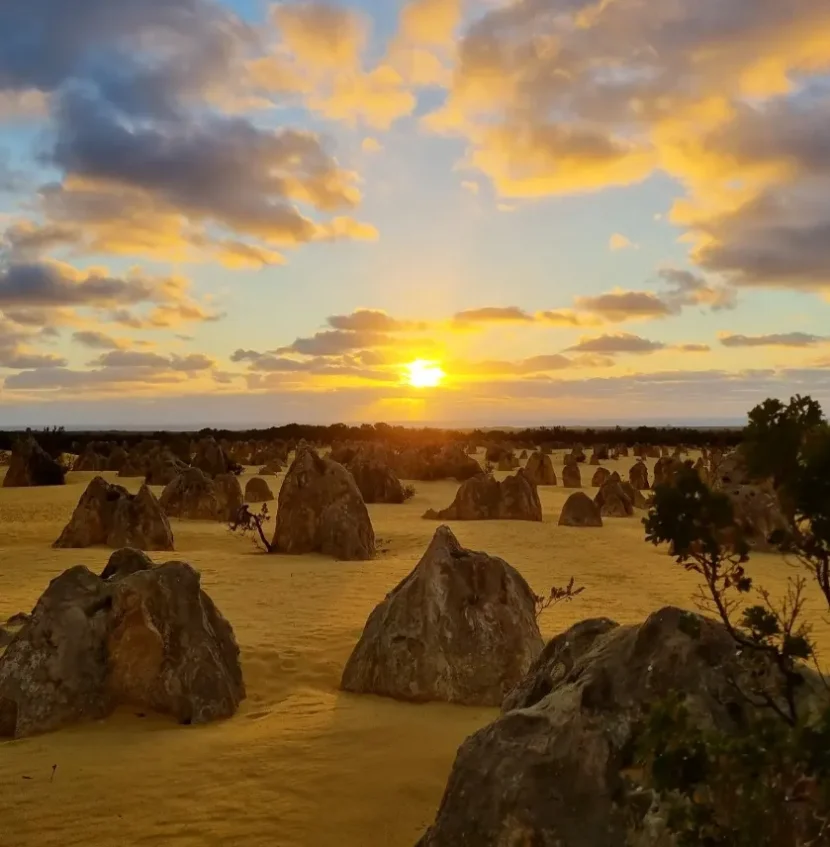The Pinnacles Desert in Western Australia’s Nambung National Park is a sight to behold, with towering limestone pillars rising out of the sand. This natural wonder is part of the Coral Coast and is famous for its landscapes and cultural and geological history. While this place is beautiful at any time of day, it truly comes alive at dawn and dusk when the soft light paints the desert gold, orange, and pink. These are the best times to capture the magic of the Pinnacles, and in this post, we’ll share photography tips, the best viewpoints and a guide to help you make the most of your visit.
Why Dawn and Dusk is Best
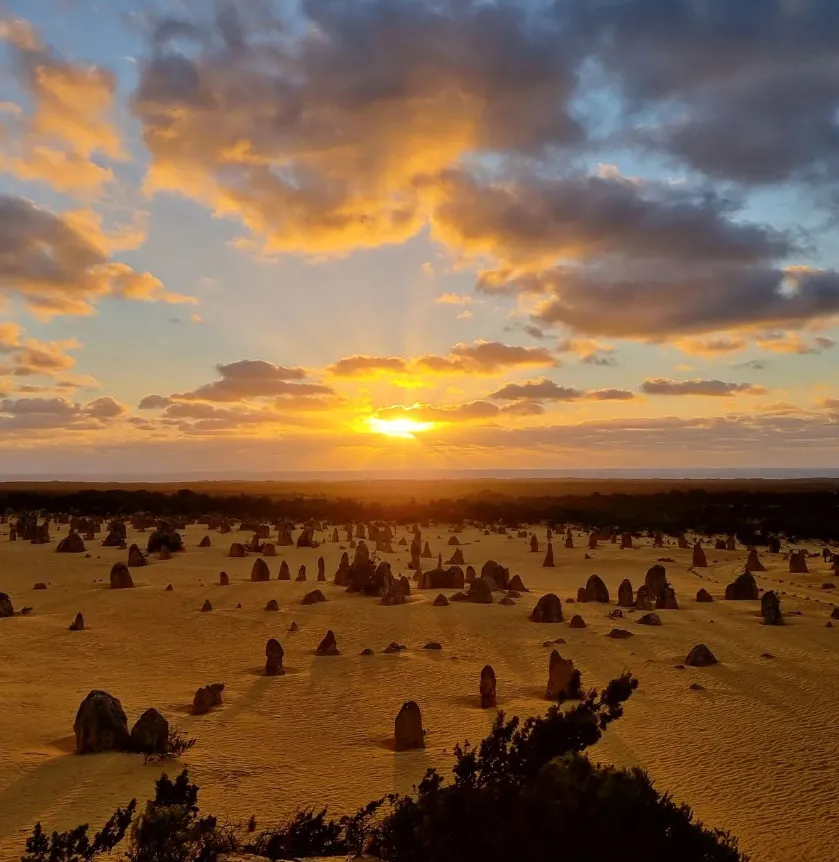
At dawn and dusk the Pinnacles Desert becomes a surreal landscape that feels like another planet. The soft light illuminates the limestone pillars, casts long dramatic shadows and gives your photos depth and texture. These times also give you the opportunity to capture the changing sky from soft pastels at dawn to reds and purples at sunset.
Dawn and dusk is also the “golden hour” when the sun is soft and warm and minimizes harsh shadows and brings out the colours of the desert. This is important when photographing the desert’s unique features as the midday sun can create blown out images.
If you’re a nature lover, you’ll also get to see wildlife, kangaroos, emus, and reptiles that are more active during the cooler hours of the day.
Dawn and Dusk Tips
Get there Early: For dawn photography get there 30-45 minutes before the sun rises to set up and get the pre-dawn glow. For dusk stay at least 30 minutes after the sun sets to get the twilight colours and any visible stars.
Use a Tripod: The low light during dawn and dusk can cause blurry images if you’re shooting handheld. A tripod will help you stabilize your camera, especially if you’re taking long exposure shots.
Shoot Silhouettes: The Pinnacles are perfect for silhouette shots against a colourful sky. Position yourself so the rising or setting sun is behind the formations, and use the contrast for dramatic effect.
Experiment with Angles: Shooting from low will make the limestone spires look even more dramatic. Use the long shadows cast by the formations to add depth to your compositions and incorporate rock pools and sweeping views to showcase the natural art.
Bring a Wide-Angle Lens: To capture the vastness of the desert a wide-angle lens is essential. It will allow you to include more of the landscape and enhance the sense of scale between the Pinnacles and the panoramic views of the sky and desert.
Look for Wildlife: Dawn and dusk is the best time to see local wildlife, kangaroos, emus. Including these in your shots will add life to your images and show the desert as a wonderland.
Be Prepared for the Weather: Although the desert is warm during the day, it drops significantly at dawn and dusk. Bring a jacket for warmth. If you’re visiting during the day, don’t forget sun protection, sunscreen and a hat.
Explore Nearby Attractions: While you’re in the area, why not extend your adventure to other nearby natural wonders? Visit the Hutt Lagoon, famous for its pink lakes, or the beaches of Jurien Bay. You can also head to Kalbarri National Park for coastal views or Lesueur National Park for wildflowers.
The Light Changes

As the sun rises or sets, the light changes, and you get a series of moods to shoot. At dawn, the cool tones of the morning sky create a peaceful, mystical feel. As the sun rises, the desert warms up, and the Pinnacles cast long shadows that add depth to your images.
As the sun sets the desert comes alive with the fading light, shadows stretch even longer as the sky turns orange and purple. The clear waters of nearby beaches like Rottnest Island or Sandy Cape reflect these colours and make for amazing reflections. If you’re lucky you might even see the moon rise or a few stars appear in the desert sky and you can photograph the Pinnacles at night.
For the ultimate experience bring a loved one and propose under the Pinnacles at sunset, it’s a truly magical spot that will make memories for a lifetime.
See the Pinnacles at dawn and dusk and you’ll get a whole range of images to show the beauty and drama of this landscape.
Beyond the Pinnacles
After taking in the views of the Pinnacles Desert, the adventure doesn’t stop there. The Coral Coast is full of amazing destinations that offer natural beauty and experiences. Whether you’re a nature lover, a history buff, or just looking to chill out, there’s something for everyone.
Ningaloo Reef: A Coral Reef
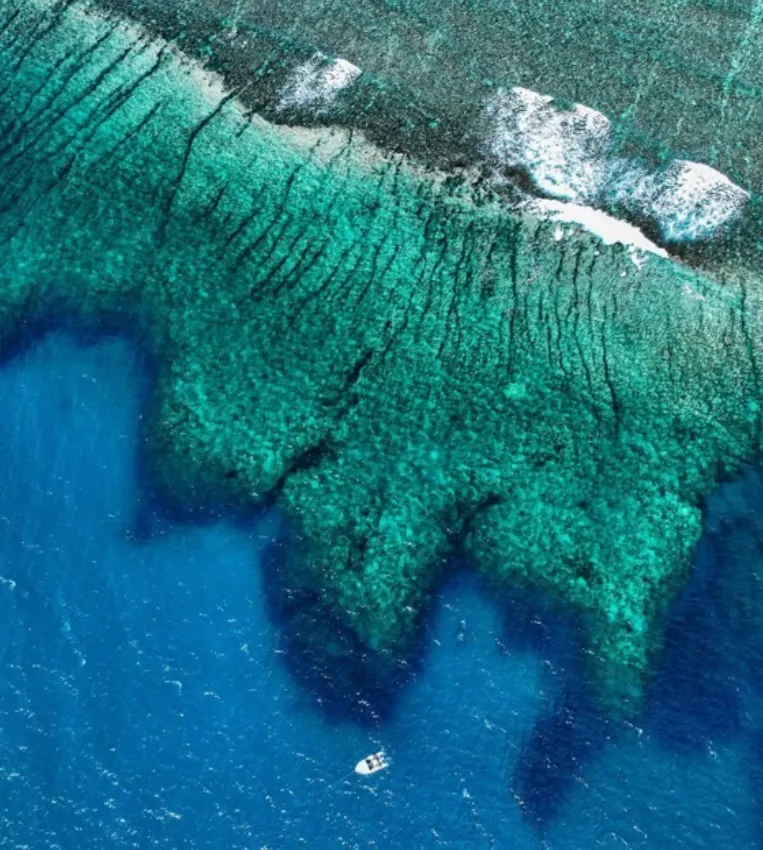
Just a few hours north of the Pinnacles is Ningaloo Reef, one of the world’s largest and most intact coral systems. Stretching 260km along the coast, Ningaloo is a UNESCO World Heritage site famous for its marine life and clear waters. Here, you can swim with whale sharks, the gentle giants of the ocean, which visit the reef between March and July. If you’re not here during whale shark season, there’s still plenty to see – colourful corals, manta rays, sea turtles and over 500 species of tropical fish make this reef a diver’s playground. Whether you’re an experienced diver or just want to snorkel in shallow water, Ningaloo Reef is an unforgettable experience in a natural wonderland.
Hutt Lagoon: The Pink Lakes of Australia
Just a short drive from the Pinnacles is Hutt Lagoon, a pink lake near Kalbarri. The pink colour comes from carotenoid producing algae and the intensity changes depending on the time of day and season. Photographers and nature lovers come to this spot to capture the colours which are stark against the desert and white sand. This surreal landscape is a must see for anyone driving along the Coral Coast.
Wave Rock: A Geological Wonder
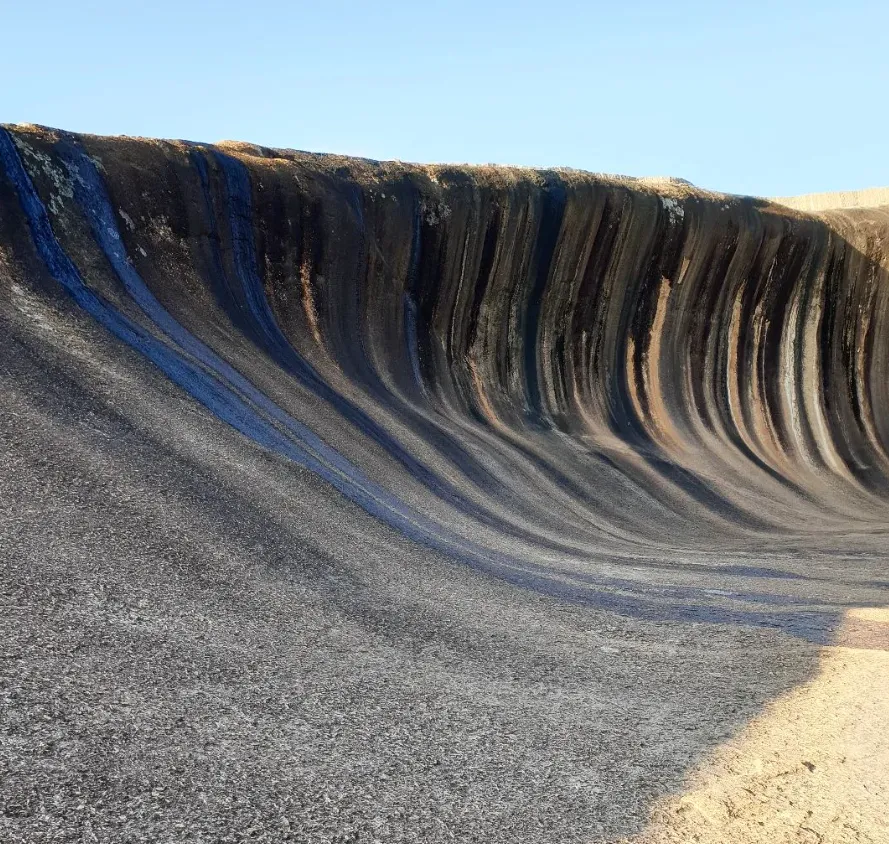
Further inland is another natural wonder – Wave Rock. This massive curved rock formation is 15m high and 110m long and looks like an ocean wave frozen in time. Over millions of years erosion and weathering has shaped this natural rock into its current form. You can walk along the top of Wave Rock for views of the surrounding landscape or explore the nearby Hippo’s Yawn, a cave shaped like a yawning hippo. If you love ancient history the area has Aboriginal rock paintings to see.
Cable Beach: Beach Relaxation
If you want to slow down head to Cable Beach in Broome. White sandy beaches and pristine waters stretch for 22kms along the coast, plenty of room to sunbath, swim or just take in the views. Cable Beach is famous for camel rides at sunset where you can watch the sky change colour as the sun sets into the Indian Ocean. The area has vibrant rock formations and massive swells for the surfers.
South Australia’s History and Art
For history and culture buffs South Australia has a wealth of Aboriginal heritage and colonial history. Explore the history of the region through historic towns, heritage sites and art galleries that showcase local and Indigenous art. In Adelaide you’ll find a vibrant arts scene with contemporary galleries and museums that reflect the region’s creative spirit. Head to the Barossa Valley for food and wine experiences, wine tasting and local produce and learn about the centuries old winemaking traditions that define the region.
Kalbarri National Park: Coast and Inland
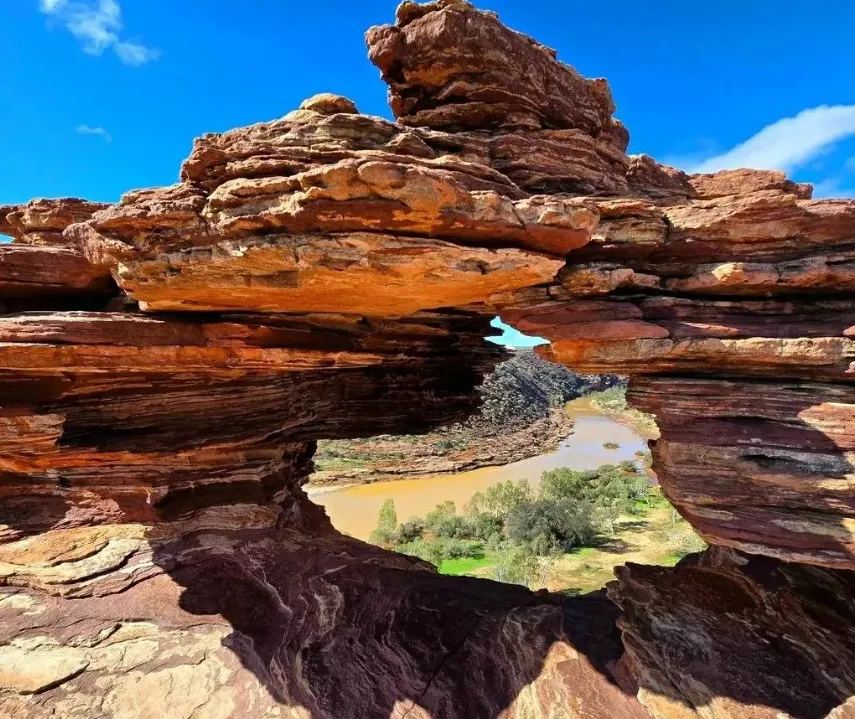
Back on the Coral Coast head to Kalbarri National Park, a place of dramatic cliffs, deep gorges and wildflowers. The Kalbarri Skywalk has views over the rugged landscape, the inland gorges offer hiking, kayaking and wildlife spotting. Red Bluff is a towering cliff that has stunning views of the Indian Ocean and is a great spot to see dolphins and whales during their migration.
More Coastal and Off the Beaten Track
If you want to go further afield head to Jurien Bay, with its pristine beaches and calm waters perfect for swimming and snorkelling. The town of Horrocks Beach is another coastal gem, quieter than the others with rock pools and shallow bays perfect for families. From here you can also visit the Abrolhos Islands, a group of 122 islands with marine life and history, where the East India Company’s ship Batavia wrecked in the 17th century. For the more adventurous head to the Lancelin Sand Dunes where you can sandboard on the biggest dunes in Western Australia or just take in the views of the surrounding countryside.
Lancelin and South West: Scenic Drive
For a drive head down National Route 1 to the South West of Western Australia. Along the way you’ll pass through charming coastal towns and rugged country to stop at Geographe Bay for calm turquoise waters and views of the Cape Naturaliste Lighthouse.
Inland the Avon Valley gives you a taste of rural WA, rolling hills, historic homesteads and hiking and wildlife spotting.
With so many attractions and landscapes the Coral Coast has more than just the Pinnacles Desert. Whether you want adventure, culture or relaxation the area around the Pinnacles has breathtaking beauty and unforgettable experiences waiting to be discovered.
Join us for unforgettable Pinnacles tours that showcase the desert’s stunning landscapes at dawn and dusk. Capture the magic of this unique destination with us!
FAQ
When is the best time to photograph The Pinnacles Desert?
Dawn and dusk, when the light is soft and the limestone is lit up. Also great for wildlife and skies.
What should I bring to photograph The Pinnacles at dawn and dusk?
Tripod, wide angle lens, camera with manual settings and a warm jacket for the cool temps.
Can I visit The Pinnacles Desert outside of hours for sunrise or sunset photography?
Yes, you can visit the Pinnacles Desert early morning and late evening for sunrise and sunset photography. Check park hours and any restrictions.
Can I see wildlife in The Pinnacles Desert?
Yes, dawn and dusk is the best time to see local wildlife such as kangaroos, emus and reptiles. Look out for animals in the rock outcrops and desert landscape.
What should I wear when visiting The Pinnacles at dawn or dusk?
Bring a warm jacket as it can get cold, and sturdy shoes for the uneven ground. Don’t forget sun protection if you’re staying all day, sunscreen, hat and water.
